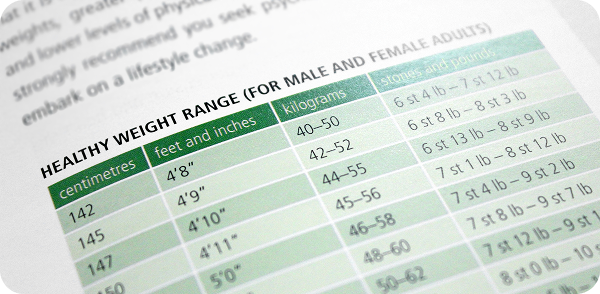
Why We Should Measure Waist-to-Height Ratio – Not Just Body Mass Index
Learn how waist-to-hight ratio can be used as a measure of your health including how it is different from BMI, how to calculate it and the science behind it.
For decades, Body Mass Index (BMI) has been used to assess whether someone has a “healthy” weight. A growing body of research suggests that waist-to-height-ratio (WHtR) may be a more accurate predictor of health risks, particularly cardiovascular disease and metabolic disorders.
What is Body Mass Index – and Why Doesn’t it Tell the Whole Story
Body Mass Index (BMI) is calculated by dividing an adult’s weight in kilograms by their height in meters squared (BMI = weight/height2). The result will be a number which corresponds to weight categories underweight, a healthy weight, overweight and obese.
BMI is straightforward however, it has several limitations:
- BMI doesn’t distinguish between muscle and fat: BMI treats all weight the same. A kilogram of muscle weighs the same as a kilogram of fat in a BMI calculation, but their health implications are very different. Athletes can have BMIs in the “overweight” or even “obese” range due to their muscle mass, despite being in excellent health.
- It doesn’t account for body fat distribution: Two people with identical BMIs can have very different health profiles depending on where their fat is stored. Fat around the hips and thighs (subcutaneous fat) is relatively benign, while fat around the waist and internal organs (visceral fat) is metabolically active and harmful.
- It doesn’t account for age, sex, or ethnicity differences: BMI thresholds are largely based on white populations, potentially misclassifying health risks in other ethnic groups.
- It provides no information about metabolic health: Someone can have a normal BMI but poor insulin sensitivity, high blood pressure or other markers of metabolic dysfunction. Conversely, some people with higher BMIs remain metabolically healthy.

What is Waist-to-Height Ratio and How to Calculate It
To calculate Waist-to-height ratio: divide your waist circumference by your height, using the same units for both measurements. For example, if your waist measures 32 inches and you’re 64 inches tall, your WHtR is 0.5 (32 ÷ 64 = 0.5).
How to measure your waist correctly:
- Use a flexible measuring tape around your natural waist (usually just above the belly button).
- Don’t suck in your stomach or pull the tape too tight – it should be snug but not compressing your skin.
- Take the measurement at the end of a normal exhale.
The target ranges for WHtR are:
- Excellent: Under 0.43
- Good: 0.43 to 0.53
- Increasing risk: 0.53 to 0.58
- High risk: Above 0.58
General rule of thumb when interpreting waist-to-height ratio is to keep your waists circumference less than half of your height.

The Science Behind Central Obesity: Why Location Matters More Than Total Weight
The shift toward WHtR reflects a crucial insight: not all fat is created equal. Waist circumference is an excellent proxy for visceral adiposity — the fat that accumulates around internal organs.
Unlike subcutaneous fat, visceral fat is metabolically active. It releases inflammatory cytokines, hormones, and fatty acids directly into the portal vein, which delivers blood to the liver. This disrupts normal metabolism, contributing to:
- Insulin resistance → raised blood sugar and higher risk of type 2 diabetes
- Hypertension → through increased vascular resistance
- Dyslipidaemia → raised triglycerides, lower HDL cholesterol
- Chronic inflammation → increasing risk of cardiovascular disease and certain cancers
Research has shown strong links between larger waist circumference and:
- Cardiovascular disease – a better predictor of heart attack and stroke.
- Type 2 diabetes: waist measurement strongly predicts diabetic risk
- Metabolic syndrome: closely tied to abdominal fat, not total weight.
- Certain cancers: colorectal, breast, endometrial and others, linked to inflammation and hormone changes.
- Overall mortality: higher all-cause death rates, independent of BMI

How to Use Waist-to-Height Ratio in Practice
While waist-to-height ratio is more informative than BMI alone, it works best as part of a comprehensive health assessment alongside blood pressure, blood glucose, cholesterol, and other metabolic markers.
Practical tips:
- Set realistic targets: If your current ratio is above 0.5, focus on sustainable lifestyle changes rather than dramatic short-term measures for weight loss.
- Choose the right intervention: Aerobic exercise, resistance training, stress management, adequate sleep, smoking cessation, reduced alcohol intake, and a balanced diet all help reduce waist circumference.
- Track trends overtime: A rising WHtR, even within the “normal” range, may signal developing insulin resistance.
- Consider individual factors: while the 0.5 guideline works well for most people, individual health risks may vary based on genetics, age, sex and ethnicity.
Relying on BMI alone oversimplifies the complex relationship between weight and health. Waist-to-height ratio offers a more accurate and accessible measure of risk by focusing on fat distribution rather than weight alone. Incorporating WHtR into routine assessment allows earlier identification of at-risk individuals and supports more targeted, effective interventions.
If you are concerned about your waist-to-height measurement or would like to explore weight loss, e-Surgery provide online consultations and delivery of prescribed treatments. For support with other conditions like high blood pressure or type 2 diabetes get expert advice through our ask-a-pharmacist service.










